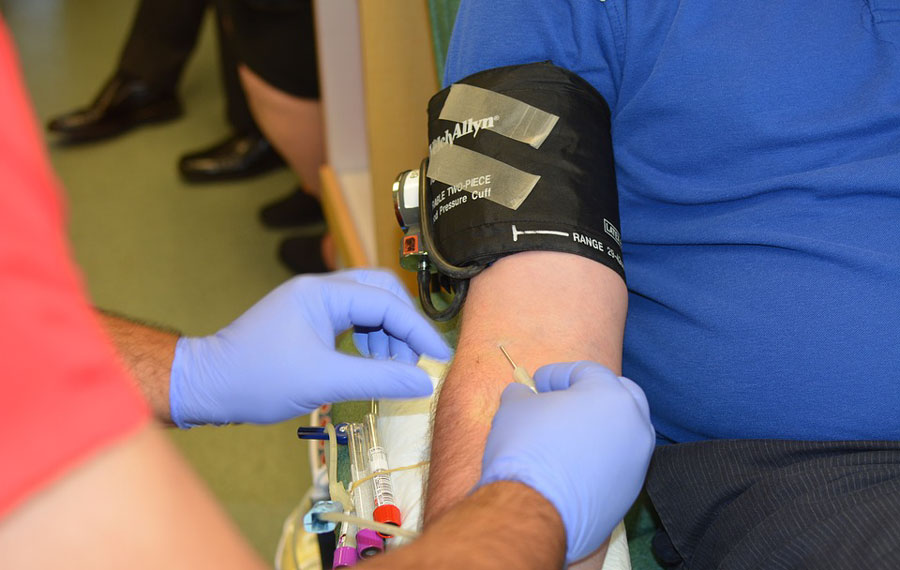
PORTLAND, OR – Blood donation centers across the U.S. are ramping up efforts to collect plasma from people who have recovered from COVID-19 in hopes it could be used to save the lives of others infected with the pandemic disease.
Under guidelines released Tuesday by the AABB, an international nonprofit agency focused on transfusion medicine and cellular therapies, dozens of community blood centers nationwide could become a key source for the century-old treatment known as convalescent plasma therapy.
The treatment uses blood products taken from people who have recovered from a viral infection and injects them into those still suffering. The experimental practice was used during the devastating 1918 flu, as well as to treat measles in the 1930s. In recent years, plasma therapy been used to treat victims of Ebola, SARS and H1N1 influenza.
The treatment is not a sure thing.
Studies suggest that using the plasma had some success in reducing symptoms and death in past outbreaks, but its true efficacy has not been proved in rigorous clinical trials. In the current outbreak, anecdotal evidence from China shows that passive antibody therapy appears to help sick patients fight off COVID-19 until they can develop antibodies on their own.
Given there’s no treatment or vaccine for COVID-19, experts say it’s a promising option to try.
“There isn’t anything else out there,” said Dr. Louis Katz, a blood industry expert who is leading the AABB’s working group on convalescent plasma. “There are historical precedents that it may be beneficial and enough early data that it’s safe.”
The new guidelines come a week after the federal Food and Drug Administration authorized the emergency use of convalescent plasma by doctors for individual patients who are critically ill with COVID-19. Houston Methodist Hospital was the first academic medical center to use the therapy. Since Saturday, the hospital has treated two COVID-19 patients with donor plasma, a spokesperson said. Results are pending.
A few sites in the U.S., including the New York Blood Center, started collecting plasma last week. And a few clinical trials have started testing the use of survivor plasma for COVID-19. The American Red Cross has set up a website to collect information about potential plasma donors.
As the AABB and another group, America’s Blood Centers, join the effort, the new rollout could expand the practice exponentially, Katz said.
“This is all medicine on the fly, right?” Katz said. “We don’t have the randomized controlled trials. We’re going to do the best we can.”
At community blood centers, plasma will be drawn from donors with lab-confirmed tests showing that they had COVID-19 — and that they’ve since tested negative for it, or that 28 days has passed since they’ve shown symptoms. Donors will be eligible to provide plasma every 28 days, the guidelines say.
Several academic laboratories and medical companies are racing to roll out tests that use a pinprick of blood to detect infection-fighting antibodies to the virus. At first, it may be difficult for some blood centers to access the tests, Katz said.
In the meantime, the centers will be allowed to harvest plasma from recovered COVID-19 donors, speed it to “very sick individuals as quickly as possible” and then test for antibody titers, or measurements, later, FDA spokesperson Michael Felberbaum said Tuesday.
That will make a huge difference in the potential volume of convalescent plasma collected, Katz said. “Now that we have such an accommodating stance from the agency, we can go whole hog,” he said.
An emergency investigational new drug, or e-IND, authorization is required to transfuse convalescent plasma into patients, but not to collect it from donors or distribute it. The FDA has granted “numerous” requests for emergency INDs and continues to grant them as they are received, Felberbaum noted.
A Seattle-area blood center, Bloodworks Northwest, is working with the National Institutes of Health and the University of Washington to begin collecting plasma from patients who have recovered from COVID-19. Those donations will become part of a research study co-led by Dr. Terry Gernsheimer, a professor of medicine at the UW School of Medicine. They’ll also be logged in a national registry being created to track the outcomes of the plasma therapy, said Dr. Rebecca Haley, medical director of Bloodworks Bio, which produces biological products.
Interest is expected to be high among those who have suffered through the pandemic infection.
Dr. Jon Peters, 66, a family practice physician in Portland, Oregon, tested positive for COVID-19 last week. He’s still at home with a fever and cough, but expects to get back to work when his symptoms subside. He plans to donate plasma as soon as he’s able.
“It’s such a low-risk issue for the person donating it, but it could save a life,” he said. “At this point, they need every option they can get.”



Comments are closed.